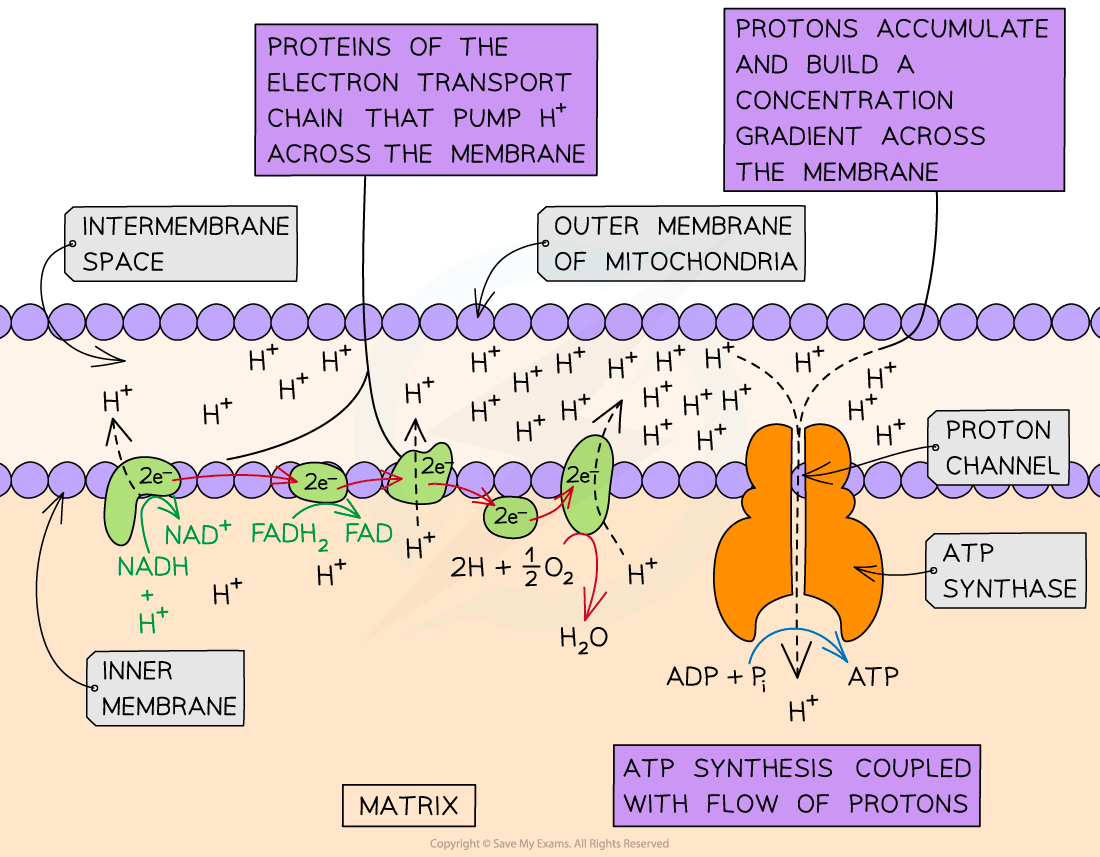Aerobic Respiration: Oxidative Phosphorylation (Cambridge (CIE) A Level Biology): Revision Note
Exam code: 9700
Oxidative phosphorylation
Oxidative phosphorylation is the last stage of aerobic respiration
It takes place at the inner membrane of the mitochondria
Several steps occur:
Hydrogen atoms are donated by reduced NAD and FAD
Hydrogen atoms split into protons and electrons
The high-energy electrons release energy as they move through the electron transport chain
The released energy is used to transport protons across the inner mitochondrial membrane from the matrix into the intermembrane space
A concentration gradient of protons is established between the intermembrane space and the matrix
The protons return to the matrix via facilitated diffusion through the channel protein ATP synthase
The movement of protons down their concentration gradient provides energy for ATP synthesis
Oxygen combines with protons and electrons at the end of the electron transport chain to form water
Electron transport chain
The electron transport chain is made up of a series of membrane proteins/electron carriers
They are positioned close together which allows the electrons to pass from carrier to carrier
The inner membrane of the mitochondria is impermeable to hydrogen ions so these electron carriers are required to pump the protons across the membrane to establish the concentration gradient

Examiner Tips and Tricks
Examiners often ask why oxygen is so important for aerobic respiration. Oxygen acts as the final electron acceptor. Without oxygen the electron transport chain cannot continue as the electrons have nowhere to go. Without oxygen accepting the electrons (and hydrogens) the reduced coenzymes NADH and FADH2 cannot be oxidised to regenerate NAD and FAD, so they can’t be used in further hydrogen transport.

Unlock more, it's free!
Did this page help you?